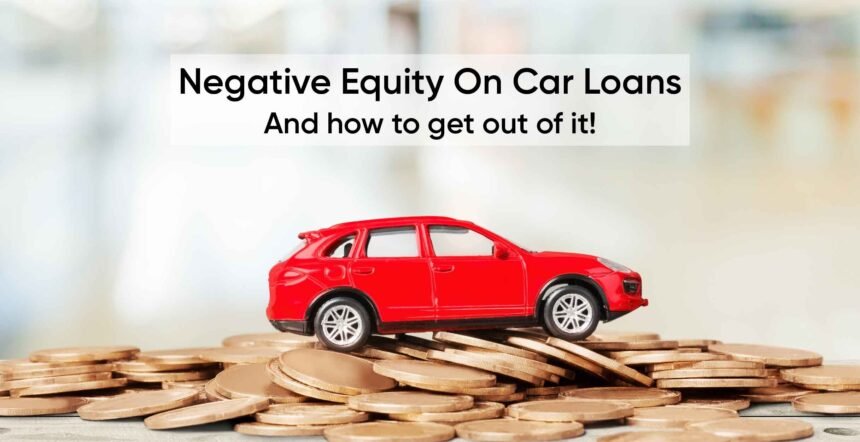Buying a car is one of the biggest financial decisions most people make—but unlike real estate, cars almost always lose value as soon as you drive them off the lot. When you owe more on your car loan than what the vehicle is worth, you have what is known as a negative equity auto loan. This situation can feel overwhelming, especially if you need to sell or trade in the car, but the good news is that there are practical ways to get out from under it.
In this guide, we’ll explain what a negative equity auto loan is, why it happens, and most importantly, the strategies you can use to protect yourself financially. Along the way, we’ll also touch on how tools like an auto loan calculator with negative equity can help you make smarter decisions, and how an auto equity loan could offer a short-term solution.
Understanding Negative Equity Auto Loans
A negative equity auto loan occurs when your current outstanding balance is greater than your car’s actual market value. For example:
-
Your auto loan balance: $20,000
-
Current vehicle value: $15,000
-
Negative equity: $5,000
This means if you try to sell or trade in your vehicle, you would still be responsible for paying that $5,000 difference to your lender.
Negative equity is sometimes called being “upside down” on your car loan, and it’s more common than most people realize. According to industry reports, a significant portion of car buyers roll negative equity balances into new loans each year—which only makes the problem worse.
Why Do Negative Equity Auto Loans Happen?
Several factors can lead to negative equity, including:
-
Depreciation – Cars lose value quickly, especially during the first few years after purchase.
-
Low Down Payment – If you financed your car with little or nothing down, your loan balance might outpace your car’s declining value.
-
Long Loan Terms – Spreading out a loan over six, seven, or even eight years lowers your monthly payments but increases the risk of negative equity.
-
High Interest Rates – More of your payments initially go toward interest, leaving the principal balance high.
-
Rolling Old Debt Into New Loans – If you already had negative equity on a previous vehicle and added it to your new loan, you start out upside down immediately.
The Risks of Carrying a Negative Equity Auto Loan
Being stuck with negative equity isn’t just an inconvenience—it can have real financial consequences:
-
Limited mobility – Selling or trading in your car becomes difficult because you’ll owe money just to walk away.
-
Debt load – You might feel tempted to roll negative equity into a new loan, increasing your debt further.
-
Insurance issues – If your vehicle is totaled in an accident and your payout doesn’t cover the loan, you may be left with unpaid debt unless you have GAP insurance.
-
Budget strain – Continuing to pay for a car that isn’t worth what you owe can delay other financial goals such as saving for a home or retirement.
How to Tell if You Have Negative Equity
The simplest way is to compare your loan balance to your car’s actual market value. You can:
-
Check your payoff balance – Contact your lender for the exact amount left on your loan.
-
Check your vehicle’s value – Use resources like Kelley Blue Book or Edmunds to get an estimate of your car’s worth.
-
Use an auto loan calculator with negative equity – These tools help you input your balance, car value, interest rate, and see your financial position in detail.
If the loan balance is higher than the vehicle’s market price, you have negative equity.
7 Smart Ways to Get Out of a Negative Equity Auto Loan
Now that you know how you got there, the big question is: How do you get out? Here are the most effective strategies.
1. Keep the Car and Continue Payments
Sometimes the simplest strategy is patience. If you can afford your monthly payments, keep making them until your loan balance falls below the car’s value. This prevents you from digging the hole deeper.
2. Make Extra Payments
If financially possible, start making extra payments on your loan principal. Even a few hundred dollars extra each month can rapidly reduce your balance and bring you out of negative equity sooner.
3. Refinance Your Auto Loan
Refinancing may give you a lower interest rate and better terms, which frees up money to pay off the principal faster. However, this works best if your credit score has improved or interest rates in general have dropped.
4. Use an Auto Equity Loan
An auto equity loan is different from a traditional refinance. It allows you to borrow against the value of a vehicle you already own outright or one with significant positive equity. However, if you search for “auto equity loan near me,” remember that this option is only available if your car is worth more than what you owe. If you are in deep negative equity, this isn’t a feasible solution—but it’s worth keeping in mind once you’re in a better financial position.
5. Make a Larger Down Payment on Your Next Car
If you must replace your vehicle, consider putting down a large upfront payment to minimize or eliminate the negative equity balance from your old loan.
6. Sell the Car Privately
Selling to a private buyer often nets you more money than trading in at the dealer. If the price is closer to your loan balance, you’ll reduce the amount of out-of-pocket cash needed to close the gap.
7. Roll the Balance Into a Lease (With Caution)
Some individuals choose to roll their negative equity into a lease. While this may provide short-term relief, be careful—it usually just delays the problem and may leave you with higher payments when the lease ends.
Can Negative Equity Ever Be a Good Thing?
While rarely beneficial, negative equity isn’t always catastrophic if you’re planning to keep the car long-term. As long as your vehicle is reliable and your payments are affordable, the “upside down” situation matters less, since eventually you’ll catch up as you continue paying off the loan.
Preventing Negative Equity in the Future
The best way to deal with negative equity is to avoid it altogether. Here are proactive strategies:
-
Always make a decent down payment (at least 20% if possible).
-
Choose shorter loan terms—4 or 5 years is safer than 7 or 8.
-
Avoid rolling over debt when trading in a vehicle.
-
Buy cars that hold their value better, such as reliable pre-owned models.
-
Use tools in advance like an auto loan calculator with negative equity to understand how a potential purchase impacts your financial standing.
For further guidance, you can review trusted financial advice from Consumer Financial Protection Bureau (CFPB), a U.S. government resource that explains loan terms, debt management, and consumer rights. Having clear financial education helps prevent debt traps before they happen.
Read More: How to Find the Best Auto Equity Loan Near Me in 2025
Final Thoughts
A negative equity auto loan can feel like a heavy weight, but it doesn’t have to define your financial future. By understanding how negative equity happens, monitoring your loan-to-value ratio, and using strategies like extra payments, refinancing, or smart selling options, you can successfully break free from being “upside down” on your loan.
Exploring local options—such as making a proactive search for an auto equity loan near me once you have positive equity—can also be a helpful tool when managed wisely. Above all, the key is making informed, intentional decisions rather than quick fixes that dig the hole deeper.









